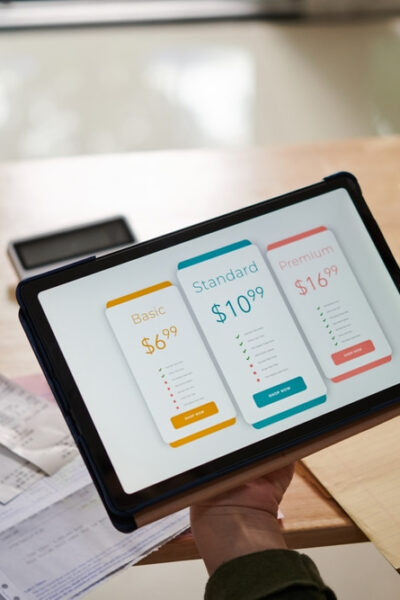Rashmita Behera, Communications Manager, Marketplace, AdButler
Have you ever wondered how some publishers excel at content creation, ad inventory management and advertiser retention, while you’re left rushing from task to task and struggling to finish anything?
If this sounds familiar, then you may need to think about streamlining your ad inventory management.
Time spent on managing ad inventory is time not assigned to content creation, technical website implementation, implementing regional privacy laws and managing advertiser relations.
We have 10 tips that can help you smoothly manage your ad inventory — saving you time, money and resources.
Table of Contents
1. Stick to the Basics
Adtech is full of platforms with different names, but often promising the same outcome — they’ll help publishers grow revenue. For many publishers, differentiating between ad servers, ad networks, ad exchanges, data management platforms (DMPs), demand-side platforms (DSPs) and supply-side platforms (SSPs) can seem a bit overwhelming at first.
While the curated marketplace has, to some extent, become an industry buzzword, brands that take this solution seriously will gain a huge advantage, increasing transparency and ensuring effective targeting in a privacy-first way. With third-party cookies on the way out, there’s no time to waste.
While each of these serves a specific purpose within the programmatic ad space, we recommend starting with the basics and then sticking to them. Here are some basic things you should start with:
- Ad serving: You need an ad server, which will be your virtual ad store where you can add further ad placements and sell them to buyers. An ad server should help you track your earnings, generate reports and customize your requirements.
- Get more buyers: More buyers mean better competition with greater earnings. When it comes to programmatic demand, look for platforms that specifically work in your medium. For instance, if you have a podcast, find ad networks that work with other podcasters. However, if the medium isn’t a problem, you can reach out to ad exchanges and SSPs to boost inventory demand.
- Adtech communities: The more connected you are, the better understanding you’ll have of the ever-changing adtech market. Become a part of an adtech network, engage with experts, share ideas/problems and thrive.
The best part is that you can work with multiple partners, compare their performance/pricing and go with the one that best suits your business.
2. Shift from Manual to Automatic (ASAP)
Automating your day-to-day operations can save you time (now) and money (in the long run).
For example, automate your reporting instead of manually creating progress reports every week. Look for platforms that can provide you reports with the exact metrics you want. Then automate it to send the report data to everyone in the team. This saves the team a lot of time, which can focus on more important tasks.
Try to automate every repetitive task.
3. Empower Your Advertisers
Amazon, Bloomberg and Roku are just some of the major brands that use self-serve technology to display ads.
Self-serve ad serving allows advertisers to place direct requests to buy your ad inventory. You can add a step for approval/change requests.
Setting up campaigns for individual advertisers is time-consuming. Then publishers have to enable targeting as per advertiser’s requirements and provide reports of their weekly/monthly performance. However, self-serve technology helps you save time spent on these activities.
Your advertisers can log in to the portal, place an order, check the performance of previous campaigns and share the results with their teams — all without having to contact your team.
This not only saves time but also creates a transparent relationship with your advertisers.
4. Strengthen Direct-Sold Inventory
Most publishers start with a programmatic selling process. But programmatic is tricky; some days might see great buyers submitting higher CPM bids, while other days nobody shows up. It can be hard to set revenue targets (and even harder to hit them) if you’re relying solely on programmatic.
This is when you should look at building a direct-sold framework. Here are some steps you can follow:
- Reach out to advertisers/brands who frequently bid on your site/app.
- Pitch them with relevant details such as your traffic, audience demographics, placements and a rate card.
- Repeat the process with more brands.
Keep working with your advertisers/buyers to improve their experience, this will help develop your retention strategy.
5. Don’t Forget Unsold Inventory
While you want to sell most of your inventory directly, you’re still going to be left with a lot of unsold ad units. In such cases, programmatic ads can be a great help.
Set programmatic ads as a lower priority. If you get an impression, direct-sold buyers should get the first chance to appear. If a direct deal doesn’t happen, then the impression can be passed to programmatic campaigns, where multiple bidders will be allowed to buy.
This will help you improve your bottom line by optimizing all the impressions you receive.
6. Keep Pricing Simple at the Start
When working directly with brands, you’ll find they ask for custom pricing models. Here are some common pricing models you should start with:
- CPM (cost per thousand impressions)
- CPC(cost per click)
- CPL (cost per lead)
Make sure you have a system to sell based on these models. Once that’s done, explore requests for other models — such as cost per acquisition (CPA) or installation (CPI) — and work with your ad server to address these.
7. When in Doubt, Ask an Expert
Adtech is tricky because it’s new and ever-evolving. But you don’t have to do everything by yourself. You can always ask an expert.
Not sure how to keep visitors on your site for longer? Hire an engagement expert.
Unable to find great buyers? Find a networking expert.
Using experts will not only shorten the learning curve it will help ease some of the pressure of trying to scale a business.
8. Understand Your Short- and Long-Term Needs
As your publishing business grows, you will find yourself hiring for multiple roles. But before that, determine whether this is a short-term or permanent requirement.
For instance, if you want to send personalized pitches to brands/advertisers, you’ll need a full-time salesperson to reach out and close direct deals for you.
However, if you need someone to set up user data collection and management tools then definitely think about hiring a freelancer or an agency.
9. Update Your Media Kit and Rate Card
A good practice is to update your media kit and rate card every quarter. You can add and remove elements that worked (or didn’t work) from your last deal.
If brands are asking recurring questions, create relevant collateral and have it ready next time. Work on adding social proof such as testimonials from other brands, recent achievements, etc.
And finally, personalize your pricing for brands. If you know they’re interested in your newsletter, skip on sharing details about your display and video inventory. It’ll only confuse and distract them.
Create a master copy of your media kit, and tweak/personalize it before sending it to the buyers.
10. Focus on Meaningful Growth Metrics
Gross and net revenue tell a clear story about growth, but increasing these means you need to look at the far-smaller metrics that feed into these numbers.
For instance:
- Impressions: How many impressions do you generate, and how can you increase them?
- Click-through rate (CTR): What is your existing CTR and is there a way to increase it?
- Average bid price: How much do you receive on average for a specific placement, and how can you improve it?
And so on.
While it really does depend on your business model and goals, the point is to look at these leading metrics, track them and then improve upon them.
Operating Like Clockwork
Ad inventory management is like a clockwork that works when many tiny parts all move in concert, which is exactly what makes it tricky.
The point is to try new things, adapt what works best for you, your team, your users, your advertisers and discard everything else.
Finally, never hesitate to ask for help when you need it.
Disclaimer: The views, opinions and ideas expressed in this post belong to the author/s and do not necessarily reflect those held by State of Digital Publishing.









